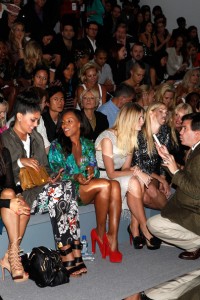



Jan
8
IN a bid to sharpen the talent of local designers, the Fiji Fashion Week is focused on starting a fashion school which will stand at the crossroads of design thinking and innovative product development in the form of ideas, concepts and clothing.
Fiji Fashion Week managing director Ellen Whippy-Knight said the school, which is expected to begin enrolment at the end of the year, would provide students with the industry knowledge and vocabulary to succeed in designing wearable designs.
“We hope to raise the understanding of designers, therefore, the fashion school will provide the best opportunity for our designers,” she said.
“The school will introduce courses like concepts of designs in both fashion and interior and also the understanding of fabric and construction of designs.”
As students learn to excel in designs, Ms Whippy-Knight said they had been encouraged to look outside the immediate context of fashion design and marketing to assess the needs of the ever-changing global economy.
With each passing fashion week, the city’s rapidly growing roster of designers have been pushing the boundaries of a less-explored side of the industry: fashion show production.
Last month saw the region’s first ever underwater fashion show, hosted by the recently established Fashion Department at American University in the Emirates (AUE). What got industry professionals and design students talking was the logistical prowess of the students at AUE who helped organise the underwater spectacle.
“Organising the show is definitely harder than it looks. We had to learn how colours work underwater. Blue and green can be overpowered by the underwater surroundings, and red can appear brown, while yellow appears brighter. Knowing these factors are important when the final effect of the gown is so dependent on the way it is displayed underwater at the show,” third year fashion design student, Sara Hussein, said about her first hands-on experience in fashion logistics.
The ocean-inspired show featured 10 female divers from Atlantis, The Palm, who volunteered to display Emirati-influenced long, flowing gowns in the large aquarium.
“We had to make sure that the fabric was breathable by shredding the layers. The models wore elaborate masks over their scuba gear, which had to be painted with water-resistant paints. The biggest obstacle we had to face was ensuring that the air tanks were hidden from view. We had to improvise ways to fasten material in salt water, as most adhesives wouldn’t work. We ended up heavily relying on velcro, zippers and elastic,” she added.
Despite the highly theatrical nature of top fashion shows by celebrated designers around the world, most fashion programmes in the UAE have yet to incorporate event management in their course syllabi. The importance of this aspect should not be overlooked according to Vanessa Northway, Academic Head of the School of Design and Textiles at Heriot-Watt University Dubai.
“Theatricality and performance can be important in fashion when it enhances the designer’s vision without overshadowing the designs. The headliners of the industry rely on dramatic lighting and makeup, and intricately designed backdrops for their theme-based couture. They can afford to play up the entertainment side of fashion shows as their designs are of the highest standards. When starting out, designers should let their work speak for itself and should play down any distractions to potential buyers and critics,” she told Khaleej Times. Heriot-Watt’s growing fashion department holds yearly fashion showcases to provide their design and marketing students a simulated real world scenario, including limited funding, models and accessories.
“Usually, we have a lot more than just our designs to think about. There’s a lot of planning and coordination that goes into organising a show, from making sure that the clothes fit the models perfectly to whether the makeup and hair suit the outfit. The design is always the priority, but the way your design is received by the audience depends on the way it is packaged and presented, which is why the show needs to be engaging and entertaining,” Krystle Remington, third year Fashion Design student said.


